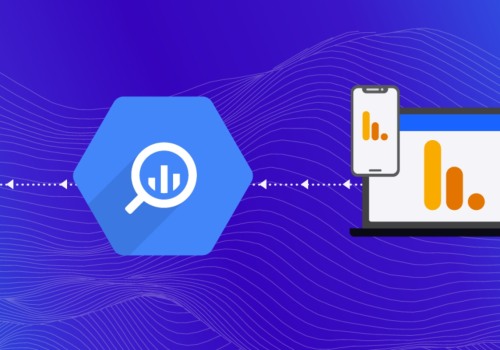When it comes to keyword research and analysis, understanding keyword intent is essential for any successful SEO campaign. Having an understanding of the intent behind each keyword enables you to develop more effective content and optimize your website for better search rankings. In this article, we'll explore the concept of keyword intent and provide strategies for understanding what your target audience is looking for when they search for specific keywords. We'll also discuss how to use this information to craft content that speaks to the needs of your visitors and helps you reach your desired search engine ranking goals.
By the end of this article, you'll have a better understanding of how to use keyword intent to maximize your SEO efforts.
Keyword Intent
is a critical concept for successful keyword research and analysis. It refers to the intent behind a user's search query and how this intent influences the user's search result. Knowing the intent behind a keyword can help you to refine your keyword research and analysis, as well as to identify which keywords you should be targeting in your campaigns. In order to identify keyword intent, you can use keyword research tools such as Google Adwords and SEMrush.These tools provide data on keyword search volume and trends, which can help you to identify the context of a particular keyword. For example, if a keyword has a high search volume but is associated with low-quality results, it is likely that the keyword has a different intent than what you are targeting. Once you have identified the intent behind a keyword, you can use this to refine your keyword research and analysis. For example, if you are targeting a specific demographic or geographic area, you can use the keyword intent to determine which keywords are most likely to be used by this demographic or in this geographic area.
This will help you to focus your keyword research and analysis on the keywords that are most likely to produce the desired results. Using keyword intent can also help you to optimize your campaigns for better results. For example, if you are targeting a particular product or service, you can use the keyword intent to identify which keywords will be most effective for targeting that product or service. This will help you to create campaigns that are more likely to generate leads and increase sales.
Examples of how to use keyword intent in your keyword research and analysis include focusing on long-tail keywords, researching related keywords, and using synonyms. Long-tail keywords are those that are more specific in nature and usually have less competition. Researching related keywords helps you to identify which keywords are related to your target market, while using synonyms helps you to target similar keywords without having to compete with larger brands. Finally, here are some tips for successful keyword research and analysis using keyword intent:
- Identify the intent behind each keyword before targeting it.
- Research related keywords to identify new potential targets.
- Focus on long-tail keywords for more targeted results.
- Use synonyms to target similar keywords without competing with larger brands.
- Analyze search trends to determine which keywords are currently trending.
What is Keyword Intent?
Keyword intent is the goal or purpose behind each keyword phrase that someone types into a search engine.The intent could be to find information, purchase a product or service, compare prices, or even find entertainment. Knowing the intent behind a keyword phrase helps inform marketers and businesses on how they can best target their campaigns and messaging. Understanding keyword intent is important for successful keyword research and analysis because it allows you to focus on the right keywords and create more effective campaigns. For example, targeting keywords with a “buying” intent (such as “buy product X online”) can improve your chances of finding new customers as opposed to targeting keywords with a “research” intent (such as “what is product X”).By understanding keyword intent, you can better understand how to target the right keywords and optimize your campaigns for maximum success.
You can also use keyword intent to identify potential new opportunities for content creation, product or service offerings, or even new markets.
How to Identify Keyword Intent
Identifying keyword intent can be a challenging task when conducting keyword research and analysis. Fortunately, there are various keyword research tools available to help you determine the intent behind a particular keyword. One of the most popular keyword research tools is Google’s Keyword Planner. With the Keyword Planner, you can enter a keyword or phrase and get back a list of related keywords and phrases that people are searching for in Google. By looking at the list of related keywords, you can get an idea of the intent behind each keyword. For example, if a keyword is related to a product or service, the intent behind that keyword is likely to purchase the product or service.On the other hand, if a keyword is related to information about a particular topic, then the intent behind the keyword could be to learn more about that topic. Another useful tool for identifying keyword intent is Google Trends. This tool provides an insight into how popular certain keywords are, based on how often they are being searched for. By comparing different keywords with one another, you can determine which keywords have the highest search volume and therefore may have the strongest intent. In addition to using keyword research tools, you can also use analytical data from your website to identify the intent behind particular keywords. By looking at the pages on your website that receive the most visits, you can gain insights into what people are searching for and what their intent may be. Understanding keyword intent is an essential part of successful keyword research and analysis.
By using keyword research tools and analyzing website data, you can gain valuable insights into the intent behind particular keywords and use this information to improve your keyword targeting and maximize your return on investment.
Examples of Using Keyword Intent
Using keyword intent in keyword research and analysisOnce you understand the intent of a keyword, you can use this to improve your keyword research and analysis. Here are a few examples of how you can use keyword intent to your advantage:1.Identify target audience - If a keyword has a particular intent, it can help you identify the target audience for that keyword. For example, if a keyword has a commercial intent, it may indicate that you should target users who are ready to buy something. On the other hand, if a keyword has an informational intent, it may indicate that you should target users who are looking for information rather than to buy something.2.Optimize content
- Knowing the intent of a keyword can help you optimize the content on your website.If the keyword has an informational intent, then you should create content that provides helpful information about the topic. Conversely, if the keyword has a commercial intent, then you should create content that encourages users to purchase something. Optimizing your content for the right keyword intent will help you get more out of your SEO efforts.
3.Analyze competition
- Understanding the intent of a keyword can also help you analyze your competition. Knowing the intent of the keyword can give you clues as to what kind of content or products your competitors are offering.This information can help you create a better SEO strategy and come up with ideas on how to outrank your competition.
4.Select keywords
- Once you understand the intent of a keyword, you can use this information to select which keywords to target. You should select keywords with an intent that aligns with your goals. For example, if you want to drive more sales, then you should select keywords with a commercial intent. On the other hand, if you want to drive more traffic to your website, then you should select keywords with an informational intent.Using Keyword Intent to Refine Your Research
In order to effectively refine your keyword research and analysis, it is important to understand keyword intent.Keyword intent is the purpose behind a search query, and understanding it can help you to target the most relevant keywords for your website. By understanding the intent behind a keyword or phrase, you can ensure that you are targeting the right words for your desired audience. When trying to identify keyword intent, it is important to think about the user's intention when they type in a search query. For example, if a user searches for “best restaurants in Los Angeles”, they are likely looking for information about restaurants in the Los Angeles area. On the other hand, if a user searches for “restaurants near me”, they may be looking for restaurants in their immediate vicinity.
By understanding the intent behind a search query, you can refine your keyword research and analysis to target the most relevant keywords. It is also important to consider how users are likely to search for a particular topic or product. For example, if you are selling shoes, you may want to target keywords related to “shoes” rather than “footwear”. By understanding how users are likely to search for your product or service, you can ensure that you are targeting the most relevant keywords. In addition, understanding keyword intent can help you to optimize your content for SEO purposes. By targeting keywords related to the intent behind a search query, you can ensure that your content is more likely to show up in search engine results.
This can help you to increase the visibility of your website and attract more traffic. Finally, understanding keyword intent can help you to identify new opportunities for targeting keywords. By understanding what users are looking for when they type in a search query, you can identify new keywords that may not have been previously considered. This can help you to expand your keyword research and analysis, increasing your chances of targeting the right words.
Tips for Successful Keyword Research
When it comes to successful keyword research and analysis, understanding keyword intent is key. The intent behind a keyword can tell you what kind of content to create and the audience you should be targeting.Here are some tips to help you identify and use keyword intent:Research the CompetitionTake a look at the competitors in your industry and analyze their keyword strategies. By understanding what keywords they’re targeting and what type of content they’re creating, you can get an idea of what kind of keywords are driving traffic and conversions for them. This will give you a better understanding of how to target similar keywords for your own content.
Analyze Search Queries
By analyzing search queries, you can get an idea of what people are looking for when they search for a particular keyword. For example, if a user searches for “red shoes”, you can see that they’re likely looking to buy shoes in that color.This type of analysis will help you identify the intent behind certain keywords and target them with more specific content.
Use Long-Tail Keywords
Long-tail keywords are phrases that are more specific than a single keyword. They usually have lower search volumes, but they can be much more targeted. For example, instead of targeting “shoes”, you could target “red leather shoes” or “men’s dress shoes”. By targeting these more specific keywords, you can ensure that your content is more focused and tailored to the user’s intent.Look at Search Results
When you search for a particular keyword, take a look at the top results and try to understand why these pages are ranking for that keyword.What kind of content are they providing? What type of language are they using? By analyzing the top search results, you can get an idea of what type of content and language is most likely to succeed for that particular keyword.
Test Different Keywords
Once you have identified a few keywords that seem to have good intent, test them out by creating content around them. Monitor the performance of your content to see which keywords are driving the most traffic and conversions. This will help you identify which keywords have the best intent and which ones should be used more often. Understanding keyword intent is an essential part of successful keyword research and analysis. By understanding the intent behind keywords, you can ensure that you are targeting the right keywords and optimizing your SEO efforts.Identifying keyword intent involves looking at the context of the search query, analyzing search results, and using other tools to determine the user's goal. Once you have identified the intent of a keyword, you can use it to refine your research, improve your keyword targeting, and optimize your SEO efforts. Mastering the art of understanding keyword intent can help you maximize your success in keyword research and analysis.






